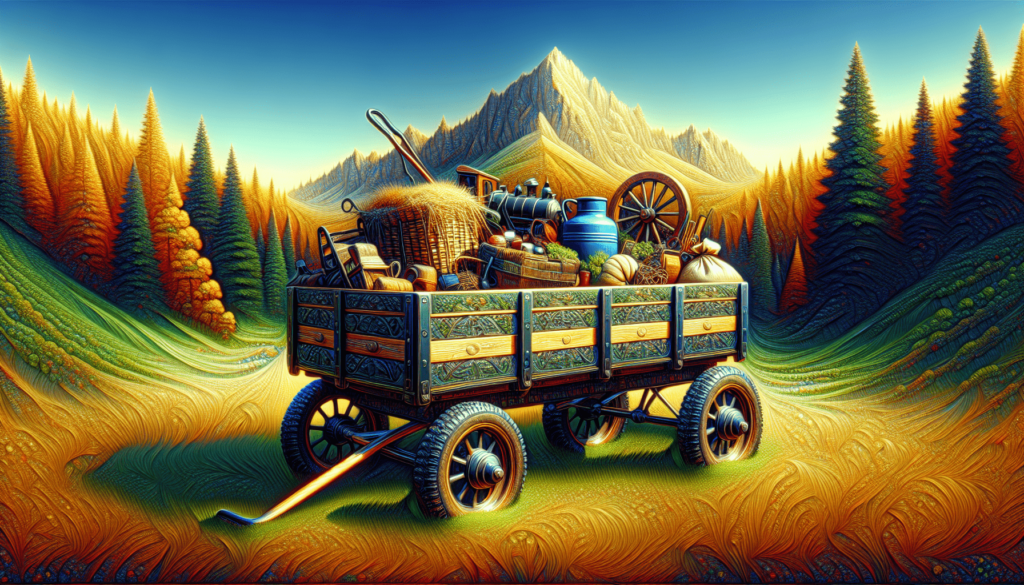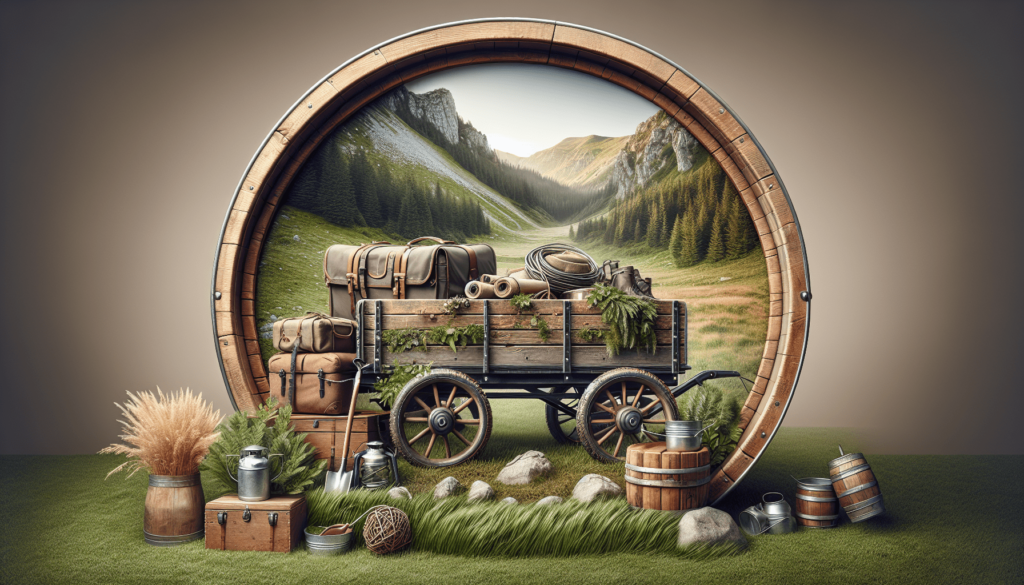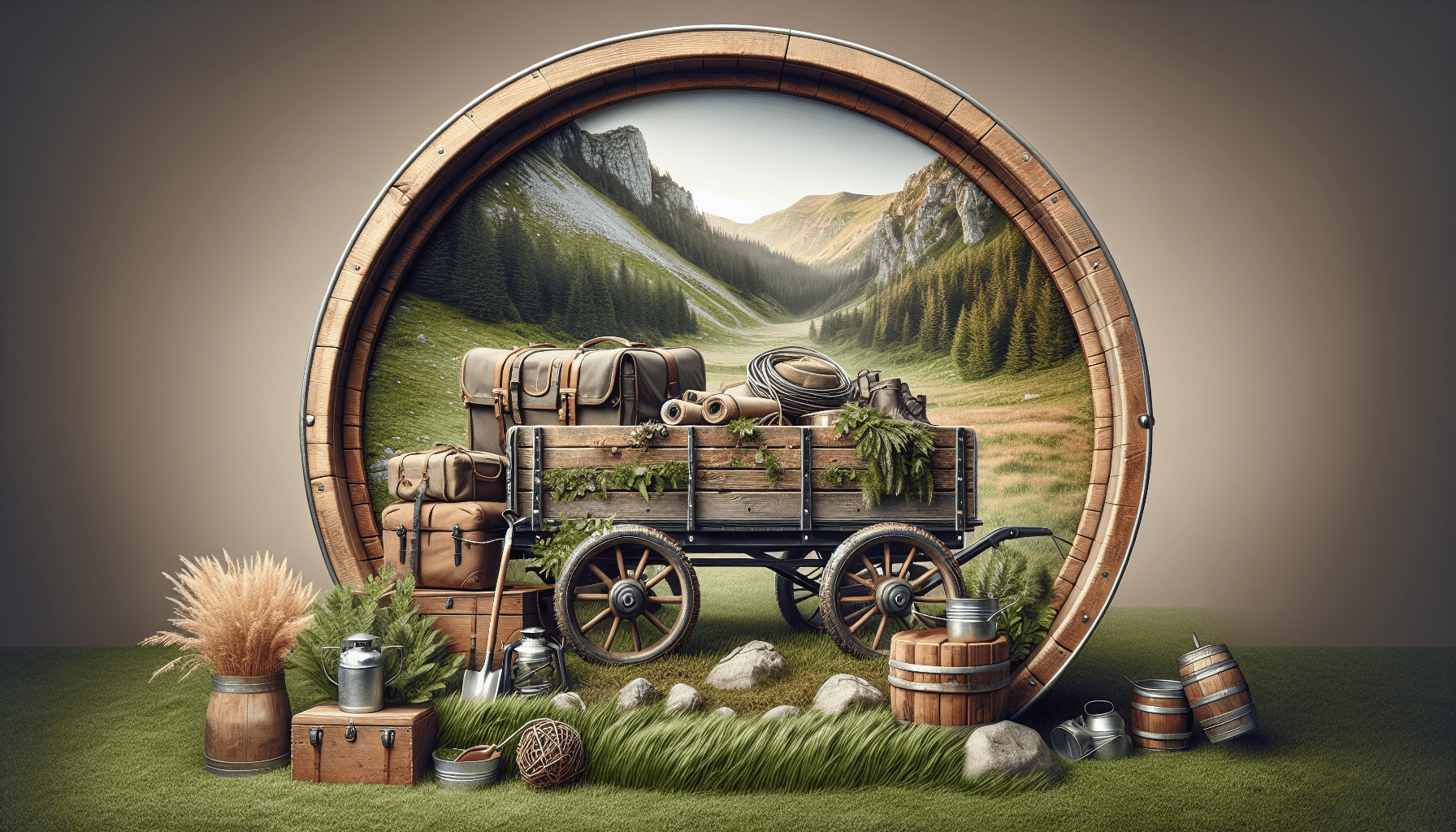Have you ever found yourself struggling to maneuver your heavy-duty wagon in tight spaces or uneven terrain? If that sounds familiar, you’re in the right place. Improving the maneuverability of your heavy-duty wagon can significantly enhance your work efficiency and make transporting goods so much easier.

Understanding Your Heavy-Duty Wagon
Before you begin making adjustments, it’s essential to understand what a heavy-duty wagon entails. These wagons are designed to carry heavy loads, so they often come equipped with larger wheels and a sturdy frame. While this robust design is great for transporting heavy items, it can sometimes hinder your ability to maneuver in limited spaces or over tricky surfaces.
Components of a Heavy-Duty Wagon
Each part of your wagon plays a role in its overall performance. Let’s break down its key components:
| Component | Function |
|---|---|
| Wheels | Provides movement; larger wheels handle rough terrain better. |
| Frame | The backbone that supports the load; must be sturdy and durable. |
| Handle | Used for steering; a long handle can improve control. |
| Brakes | Essential for safety; help in stopping the wagon effortlessly. |
Knowing these components helps you understand where you can make improvements.
Choosing the Right Wheels
The wheels on your wagon can drastically impact how well you can maneuver. Selecting the right type of wheels is crucial and can mean the difference between a smooth ride and a bumpy struggle.
Types of Wheels
When it comes to wheels, you have options. Here’s a quick overview:
| Wheel Type | Best For | Pros | Cons |
|---|---|---|---|
| Rubber Wheels | Hard surfaces | Smooth ride, good shock absorption | May wear down on rough terrain |
| Pneumatic Wheels | Uneven terrain | Excellent traction, absorbs bumps | Requires maintenance (air pressure) |
| Solid Plastic Wheels | Flat, stable surfaces | Durable, low maintenance | Less shock absorption |
Think about your typical routes and terrains. If you’re mostly on paved pathways, solid wheels might do the trick. However, if you’re constantly navigating uneven ground, pneumatic wheels could be your best bet.
Upgrading Your Handle
Do you ever find that steering your wagon feels more like a workout than a smooth operation? Upgrading your handle can significantly enhance your ability to maneuver, allowing for more precise control.
Types of Handles
| Handle Type | Description | Benefits |
|---|---|---|
| Adjustable Handle | Can be modified to suit your height | Better ergonomics, reduces strain |
| Swivel Handle | Allows for 360-degree rotation | Greater maneuverability in tight spaces |
| Long Handle | Provides more leverage, making it easier to steer | Increased control over direction |
Consider opting for an adjustable or swivel handle, especially if you often find yourself navigating tight corners or crowded areas.
Adding Brakes for Control
Brakes aren’t just for stopping; they can provide a degree of control that significantly improves your handling. If your heavy-duty wagon doesn’t have reliable brakes, it might be time to consider adding them.
Benefits of Having Brakes
- Increased Safety: Allow you to stop quickly, preventing accidents.
- Better Control: Help you manage your wagon on inclines and declines.
- Enhanced Maneuverability: Enable you to make sharper turns without losing control.
Having responsive brakes can change the way you handle your wagon completely.
Weight Distribution
Have you ever noticed your wagon tipping or becoming difficult to control? That could be due to improper weight distribution. Balancing the load evenly can lead to a smoother and more manageable ride.
How to Properly Distribute Weight
- Center the Load: Position heavier items closer to the center of the wagon.
- Use Tie-Downs: Secure items to prevent shifting while in motion.
- Keep Heavier Items on the Bottom: This lowers the center of gravity, enhancing stability.
Following these tips can help ensure that your heavy-duty wagon glides rather than wobbles as you move.

Adjusting Tire Pressure
The air pressure in your wagon’s tires can impact both maneuverability and stability. You want to make sure that the pressure is just right for the kind of terrain you typically traverse.
Finding the Right Pressure
- Pneumatic tires typically require regular checking because they can lose air over time. A good rule of thumb is to check the pressure every few weeks.
- Solid tires, while less susceptible to pressure changes, should still be inspected for wear.
Indicators for Proper Pressure
- Too Low: Difficult steering, increases the risk of punctures.
- Too High: Can lead to a bumpy ride and reduced traction.
Keeping your tires at the appropriate pressure enhances your ability to maneuver your wagon.
Adding a Steering System
Could your wagon benefit from a more sophisticated steering system? While basic steering might serve well for straightforward journeys, if you’re navigating complex environments, a more advanced system could help.
Benefits of Enhanced Steering
- Increased Precision: Makes sharp turns easier.
- Less Physical Strain: Reduces the effort needed to steer for extended periods.
Consider adding a pivoting axle or more sophisticated steering linkage for improved handling.
Simple DIY Steering Modifications
- Add a Pivot Point: A simple mechanism that allows for easier turning.
- Use Flexible Couplings: These can help adapt to uneven terrains.
Even minor modifications could lead to significant improvements in steering and control.
Choosing the Right Accessories
Accessories are often overlooked, but they can play a vital role in enhancing the maneuverability of your heavy-duty wagon.
Useful Accessories to Consider
| Accessory | Benefit |
|---|---|
| Side Rails | Keeps your load secure and balanced |
| Mud Flaps | Prevents debris from affecting your wheels |
| Tool Holder | Keeping your tools organized can save time |
| Reflectors | Enhances visibility, ensuring safety in low light |
When you’re out and about, these accessories might just make the difference in how smoothly you handle your wagon.
Maintenance Tips for Optimal Performance
Regular maintenance doesn’t just prolong the lifespan of your wagon; it also keeps it performing at peak capacity.
Routine Maintenance
- Check the Wheels: Look for wear and tear, ensuring smooth rotation.
- Inspect the Frame: Look for cracks or bends that could compromise stability.
- Lubricate Moving Parts: Keeps everything operating smoothly and reduces wear.
Taking care of your wagon not only helps in maneuvering but also ensures you get the most use out of it.
Training Techniques
Sometimes, improving maneuverability is more about technique than equipment. Training yourself to handle your wagon more effectively might be just what you need.
Tips to Improve Your Handling Skills
- Practice Turns: Use open spaces to practice sharp turns and stops.
- Weight Management: Experiment with different weights and loads.
- Feedback Loops: Keep a journal to note your handling experiences and areas for improvement.
Just like driving a car, the more comfortable you are with your wagon, the better you become at maneuvering it.
Considering Terrain Variables
Are you aware of how different terrains can affect your wagon’s maneuverability? Understanding this can give you the insight needed to navigate confidently, regardless of the landscape.
Common Terrain Types
| Terrain Type | Effects on Maneuverability |
|---|---|
| Paved Surfaces | Smooth ride, easier turns |
| Gravel | Requires careful navigation to avoid slipping |
| Muddy Areas | Can lead to getting stuck; slow and careful maneuvering is essential |
By being mindful of diverse terrains, you can better prepare for each journey.
The Importance of Practice
Ultimately, the best way to improve your maneuverability is through practice. Just as you would sharpen any skill, spending time handling your wagon can lead to significant improvements.
Steps to Effective Practice
- Set Up Obstacles: Create a mini-course with cones or other markers for practicing turns.
- Vary Load Weights: Try loading different weights to get accustomed to how it handles differently.
- Engage Helpers: Working with friends can create a relaxed environment to experiment and learn.
The more time you spend maneuvering your wagon, the more adept you will become.
Conclusion: Achieving Maneuverability Mastery
Improving the maneuverability of your heavy-duty wagon is not just about modifying parts; it’s also an ongoing process of learning and practice. You’re now armed with knowledge on choosing the right wheels, handles, and accessories, along with essential maintenance and even practice techniques.
Take the time to make thoughtful adjustments, engage in regular practice, and you’ll soon find that your heavy-duty wagon moves with ease. You’ll navigate tight spaces, uneven terrains, and all the tricky spots in between with a newfound confidence!

